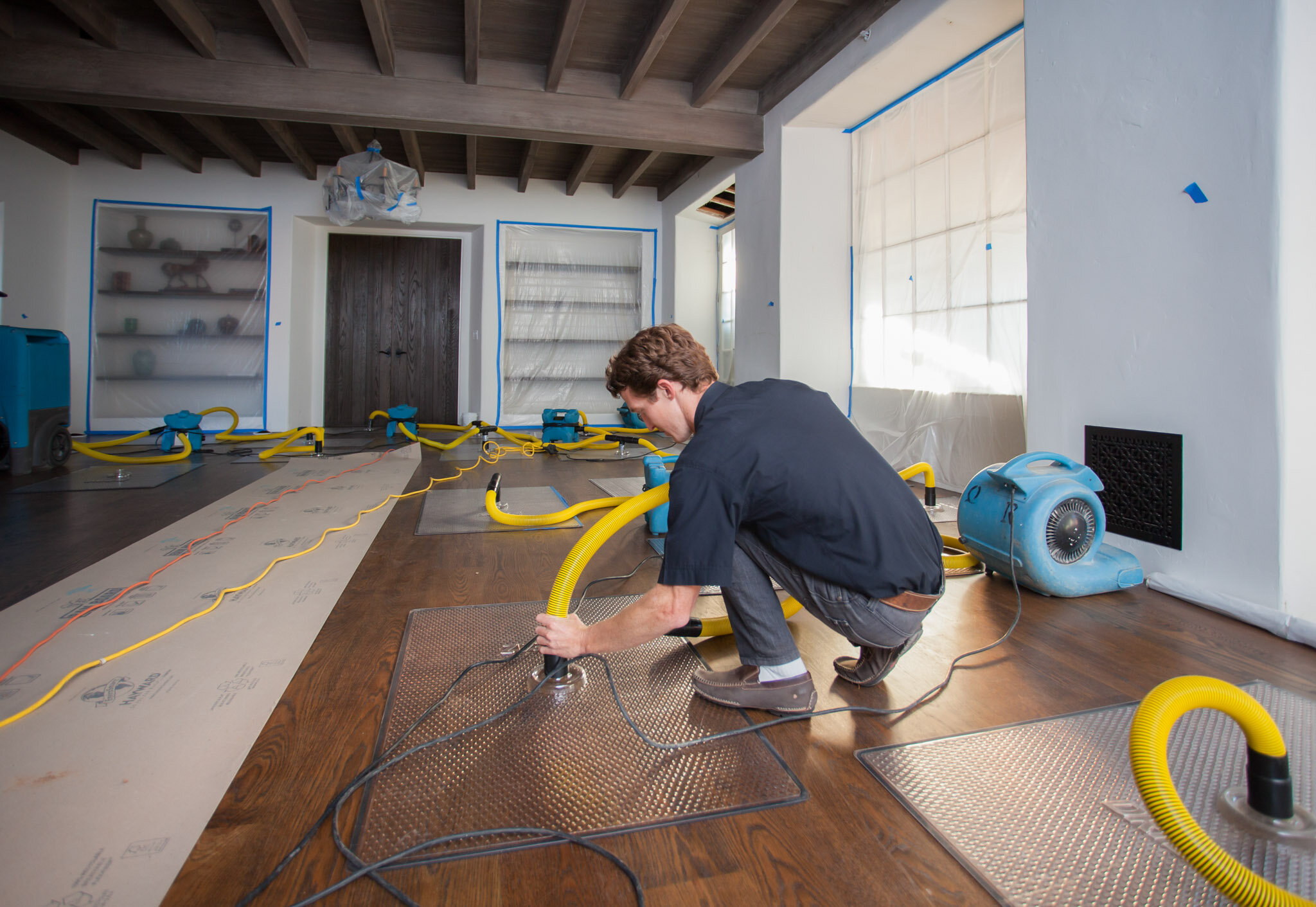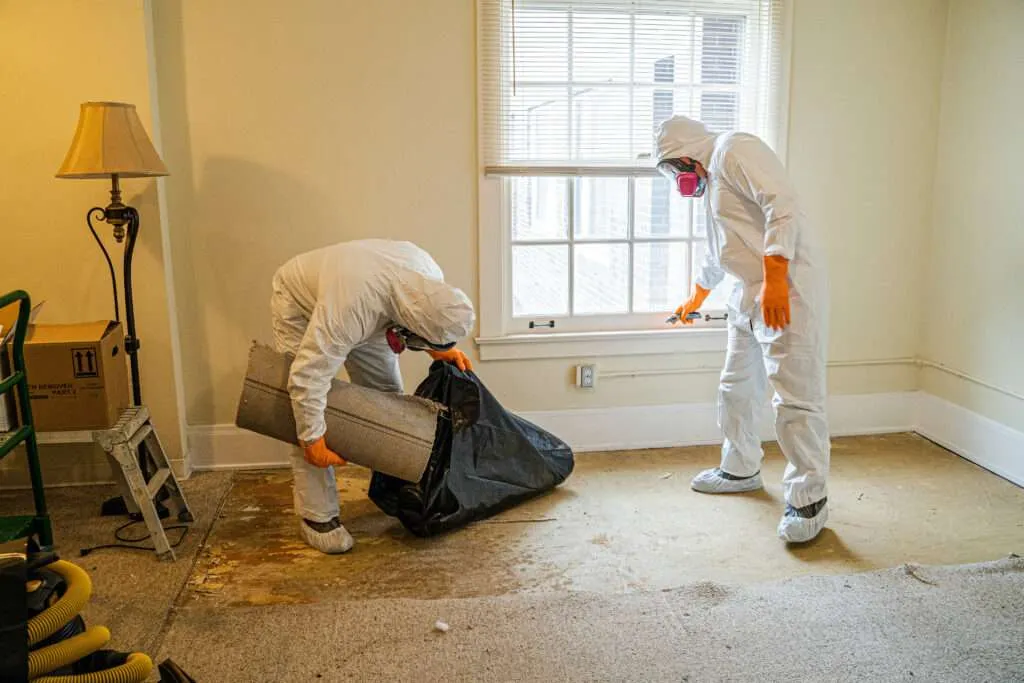A first-timer’s guide to understanding Water Damage Restoration
Wiki Article
Water Damage Restoration 101: Understanding the Process and Cost
Water damage can strike unexpectedly, leaving homeowners in a state of complication. Understanding the restoration procedure is crucial for reliable healing. From reviewing the damage to picking the ideal provider, each action influences the general result and cost. Elements such as the kind of water damage and necessity likewise play a significant function. What are the details strategies used in restoration, and exactly how can one prepare for potential expenditures?Sorts Of Water Damage

Initial Evaluation and Examination

Water Extraction Strategies
Adhering to the first evaluation, effective water removal techniques are used to alleviate damage and avoid additional issues. These methods involve the usage of specialized equipment such as industrial-grade vacuum cleaners and submersible pumps - Water Damage Restoration. The choice of technique depends upon the volume of water existing and the kind of materials affected. For standing water, submersible pumps are generally made use of for fast removal, while vacuum cleaners are suitable for extracting water from carpetings and upholstery. Additionally, progressed approaches like water extraction mats might be utilized for hard-to-reach locations - Flood Cleanup Services. The goal is to eliminate as much water as possible, decreasing the capacity for mold and mildew development and architectural damage. Prompt and effective water extraction is necessary in the general water damage repair processDrying and Dehumidification Process
Once the water extraction is full, the drying and dehumidification procedure becomes essential to bring back the damaged location. This stage usually uses industrial-grade dehumidifiers and air movers to efficiently decrease moisture degrees. The dehumidifiers attract moist air, eliminating excess moisture, while air moving companies distribute air to accelerate evaporation. Tracking tools is usually utilized to track humidity and temperature levels, making sure ideal drying problems. The duration of this process can differ depending upon the extent of the water damage and environmental factors. It is necessary to extensively completely dry all influenced materials, including walls, flooring, and furnishings, to stop mold and mildew development and architectural damage. Correct implementation of this action is crucial for a successful repair result.Cleaning and Sanitizing Affected Areas
When the drying out process is total, a thorough initial evaluation and assessment of influenced locations is essential to recognize contamination degrees. Reliable cleansing techniques and suitable items have to after that be utilized to get rid of debris and spots. Finally, sanitization and disinfection techniques are important to assure that damaging pathogens are removed, restoring the area to a risk-free problemFirst Assessment and Examination
Before starting any restoration initiatives, a detailed preliminary assessment and inspection of the impacted areas are essential for reliable cleaning and disinfecting. This process entails determining the extent of water damage, determining the resource of the water intrusion, and assessing the materials impacted. Examiners normally search for indicators of mold and mildew development, structural stability concerns, and harmed belongings. The evaluation additionally consists of inspecting wetness levels using specialized equipment to guarantee no surprise water pockets remain, as these can cause more complications. Documenting the searchings for is crucial for planning the next actions in the restoration procedure. A comprehensive preliminary analysis makes it possible for restoration professionals to create a targeted approach for reliable cleansing and disinfecting, inevitably minimizing damage and health and wellness risks.Cleansing Strategies and Products
Effective cleaning and sterilizing of water-damaged areas need a range of products and techniques tailored to the certain materials influenced. For porous surface areas like drywall and carpets, extraction methods are important to get rid of excess dampness, complied with by deep cleansing with specialized detergents. Non-porous products such as ceramic tile or metal can be cleaned up utilizing commercial-grade cleansers that successfully remove impurities. Heavy steam cleaning is an additional effective technique, particularly for rugs and upholstery, as it uses high temperatures to eliminate germs and mold (Water Damage Restoration). Furthermore, environment-friendly items are increasingly preferred for their security and effectiveness - Water Damage Restoration. Ultimately, picking the ideal cleaning approaches and items not get more info just assures instant cleanliness yet additionally help in protecting against more damage and carcinogen associated with water breachSanitization and Disinfection Techniques
When attending to water damage, proper sanitization and disinfection techniques are vital to ensure the security and health of the afflicted environment. After first cleaning, surface areas must be treated with ideal disinfectants to get rid of pathogens, mold, and microorganisms that thrive in damp conditions. Common techniques consist of the use of EPA-approved chemical anti-bacterials, which can be applied with spraying or wiping methods. Additionally, ultraviolet (UV) light systems can properly disinfect areas by counteracting microbes without harsh chemicals. The choice of approach often depends on the sort of materials impacted and the level of contamination. Ultimately, detailed sanitization not only brings back a secure living room but likewise aids prevent future wellness dangers linked with lingering wetness and mold growth.
Fixings and Restoration Options
Assessing the damage triggered by water exposure is crucial for figuring out the appropriate repair work and reconstruction alternatives. Property owners may deal with numerous concerns, consisting of harmed drywall, warped floor covering, and endangered architectural elements. Depending upon the extent of the damage, repairs may involve replacing sections of drywall, installing brand-new floor covering, or reinforcing architectural beams. In cases of severe damage, complete replacement of affected materials might be required. Additionally, professional restorers typically suggest using dampness meters to analyze covert moisture levels prior to choosing the most effective course of activity. It is essential to act quickly to stop mold growth and more damage. Picking the ideal options not only recovers the property but also assures long-lasting safety and capability.Factors Affecting Restoration Expenses

The level of water damage directly influences the restoration costs property owners can anticipate to sustain. Variables such as the source of the water, the period of exposure, and the affected products greatly influence prices. Tidy water damage from a busted pipeline is generally less expensive to restore compared to damage triggered by sewage. In addition, the level of contamination dictates the requirement for specialized cleaning and disposal services, further increasing expenses. Geographical area additionally contributes, as local labor prices and accessibility of reconstruction solutions can differ. The seriousness of the action impacts expenses; quicker treatments typically lead to reduce overall expenditures by stopping additional damage. Understanding these factors is important for house owners when estimating repair expenses.
The 3 key kinds of water damage are classified based on contamination degrees: tidy water, gray water, and black water. A complete preliminary evaluation and examination are crucial steps in the water damage restoration procedure. For standing water, submersible pumps are generally made use of for fast elimination, while vacuums are perfect for removing water from rugs and upholstery. The level of water damage directly impacts the reconstruction sets you back house owners can expect to sustain. Clean water damage from a busted pipe is generally much less costly to bring back contrasted to damage created by sewage.
Report this wiki page